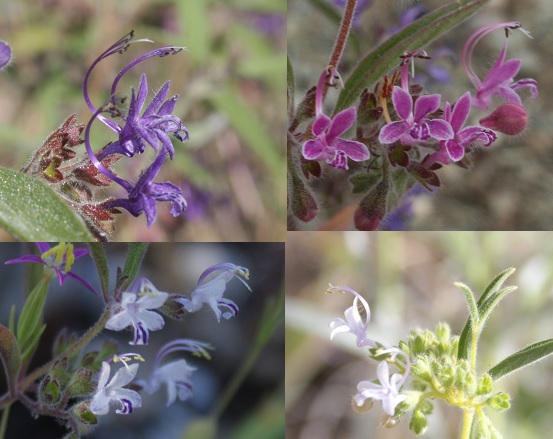Wildfire is an extremely important disturbance mechanism (whether natural or human-caused) in a  great many ecosystems. Loads of really cool research has looked at plant and pollinator community assembly following wildfire; fewer studies have examined the effect of wildfire on interactions between plants and insects. I've worked on this in a California wildflower, but am planning to start projects on similar topics in Oklahoma.
great many ecosystems. Loads of really cool research has looked at plant and pollinator community assembly following wildfire; fewer studies have examined the effect of wildfire on interactions between plants and insects. I've worked on this in a California wildflower, but am planning to start projects on similar topics in Oklahoma.
Opportunistically, I stumbled into a wonderful system to examine this in: the mixed-mating, serpentine endemic mint Trichostema laxum. Flowering in the dry California summer on harsh serpentine soils, there are very few other flowers around, so it gets a lot of attention from potential pollinators. It also has mendelian variation in flower color, allowing outcrossing rates to be estimated without using molecular tools. Using a bunch of populations and in and around the McLaughlin Reserve which did or did not burn in a series of wildfires in 2015, we found that populations which burned had larger bodied pollinators and lower rates of outcrossing than unburned populations; this result was probably driven by increased geitonogamy (within-plant pollen movement). We published the results from the 2015 and 2016 field seasons (LoPresti et al 2018, American Journal of Botany), but have data for 2017 and 2018 as well.
2020 update - these sites just burned again, which could be a great opportunity to start new projects in this system.
This work has all been with a wonderful team of collaborators including Jenny Van Wyk (UMass), Tim Miller (UC-Davis), John Mola (USGS), Kathy Toll (MSU), and Ross Brennan (UC Davis).
